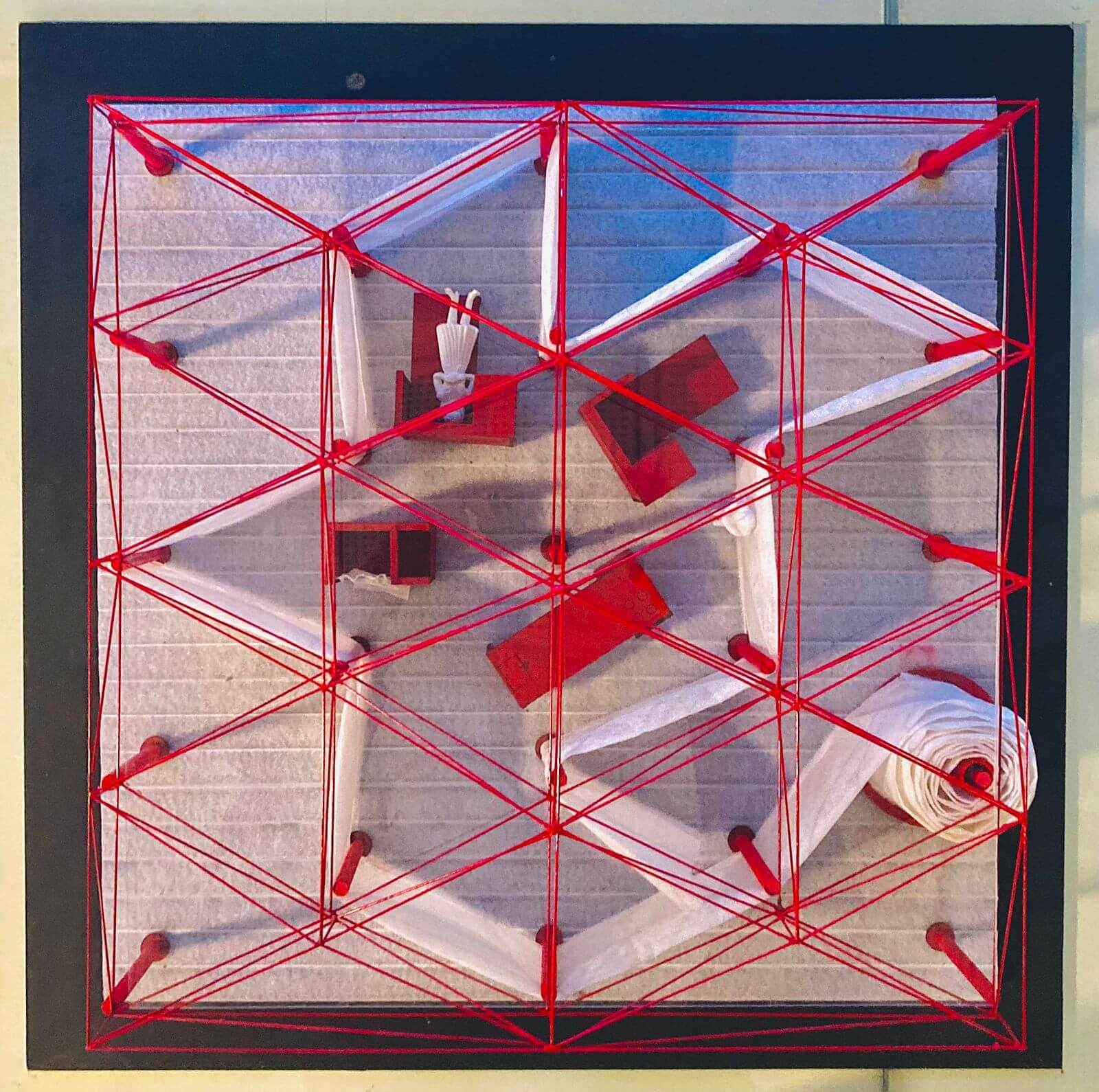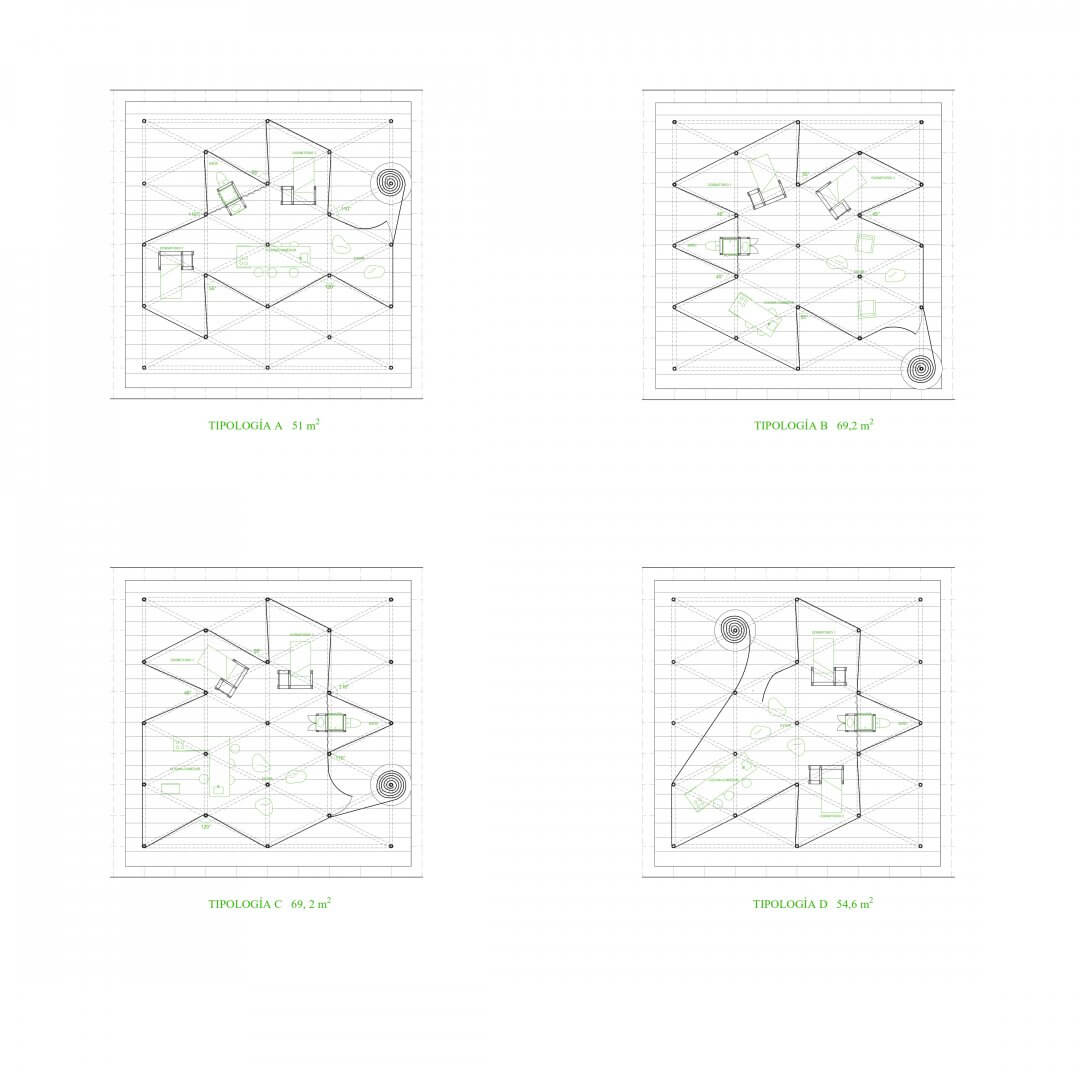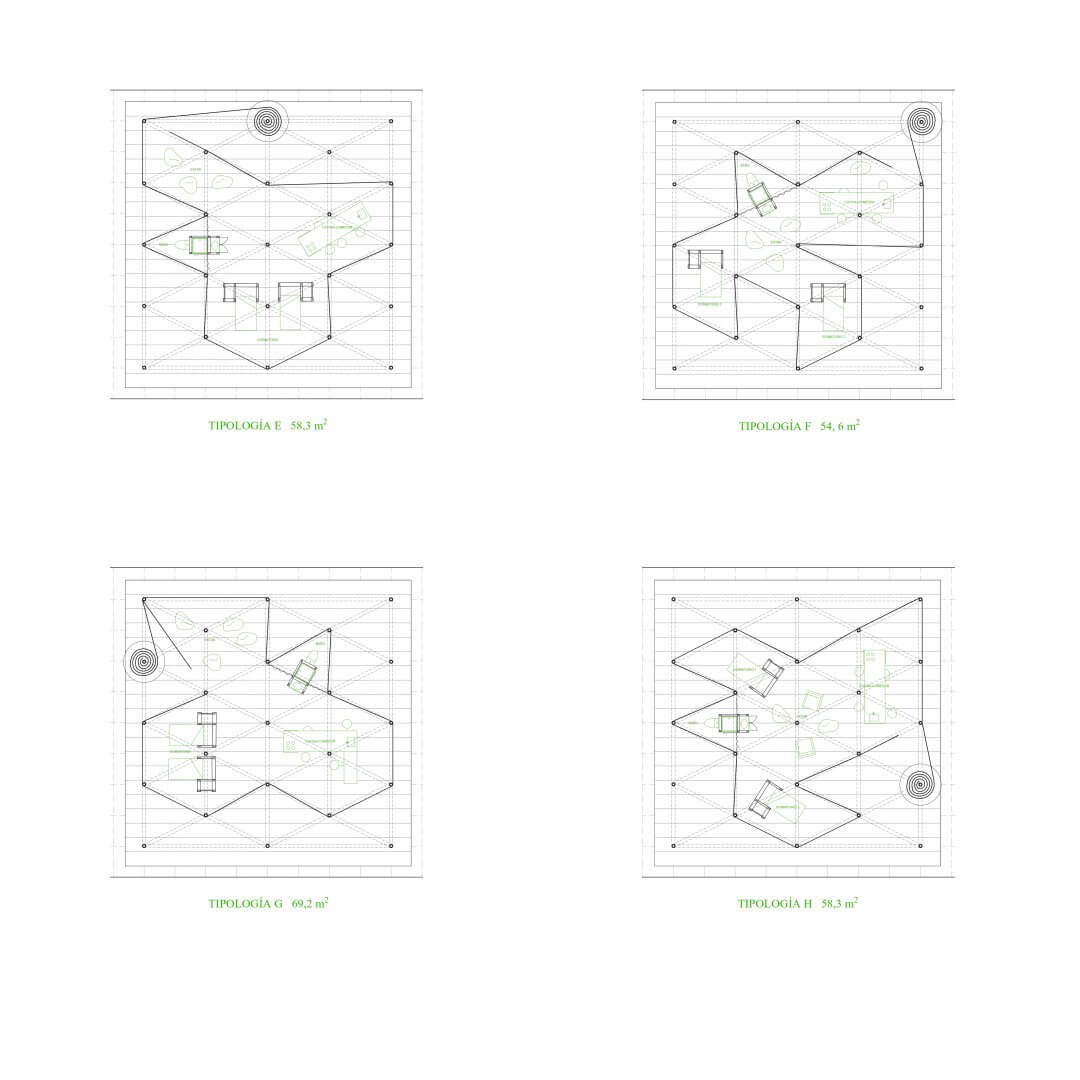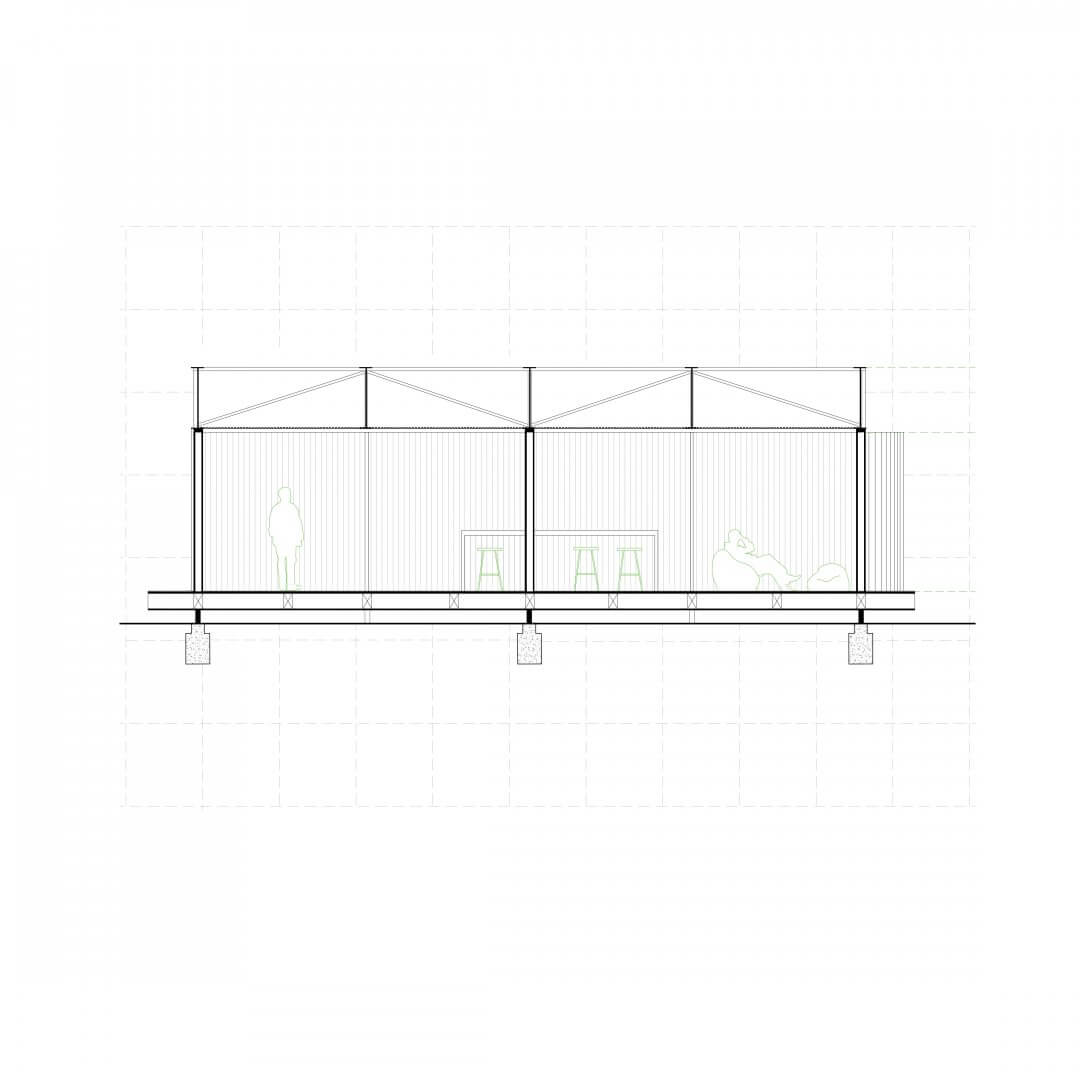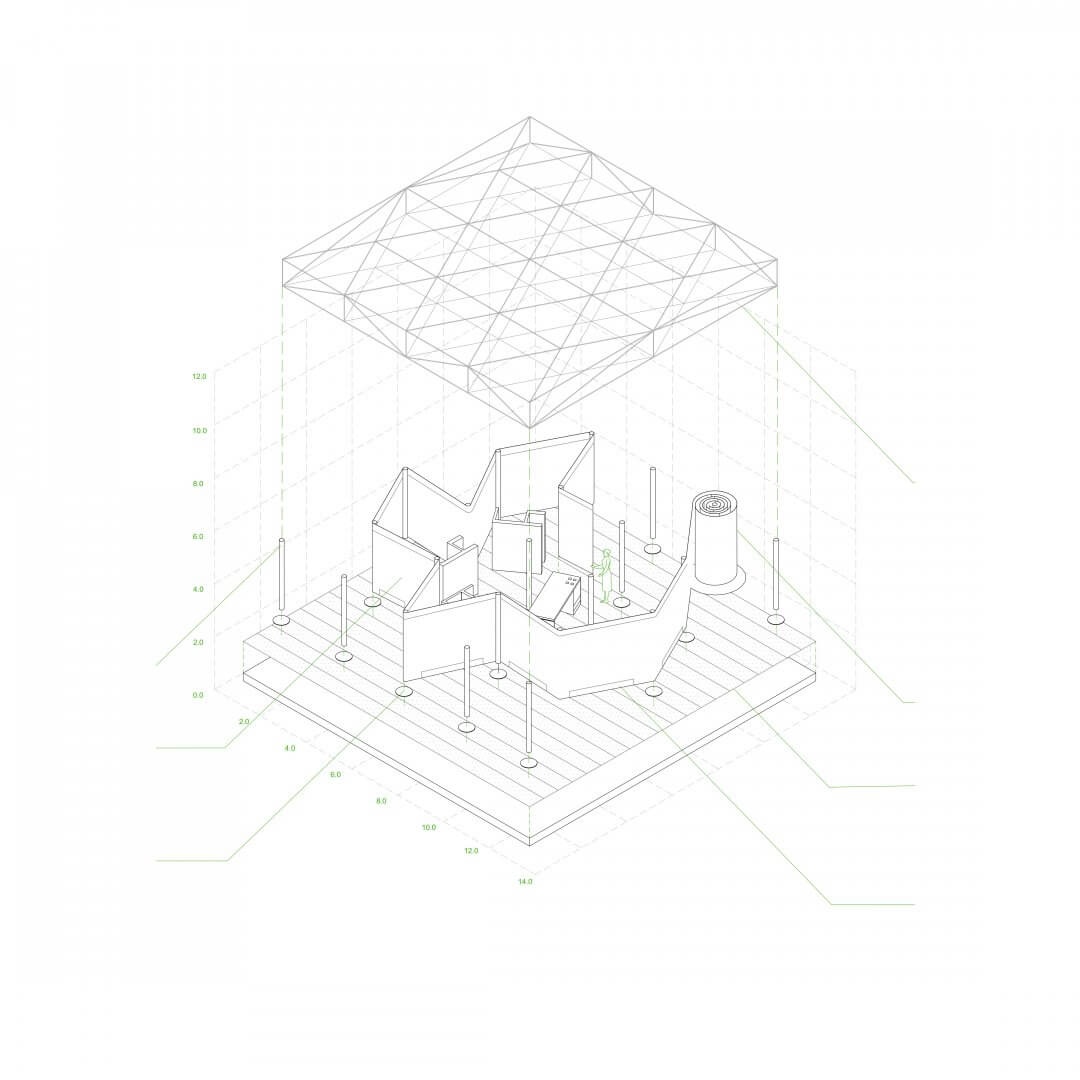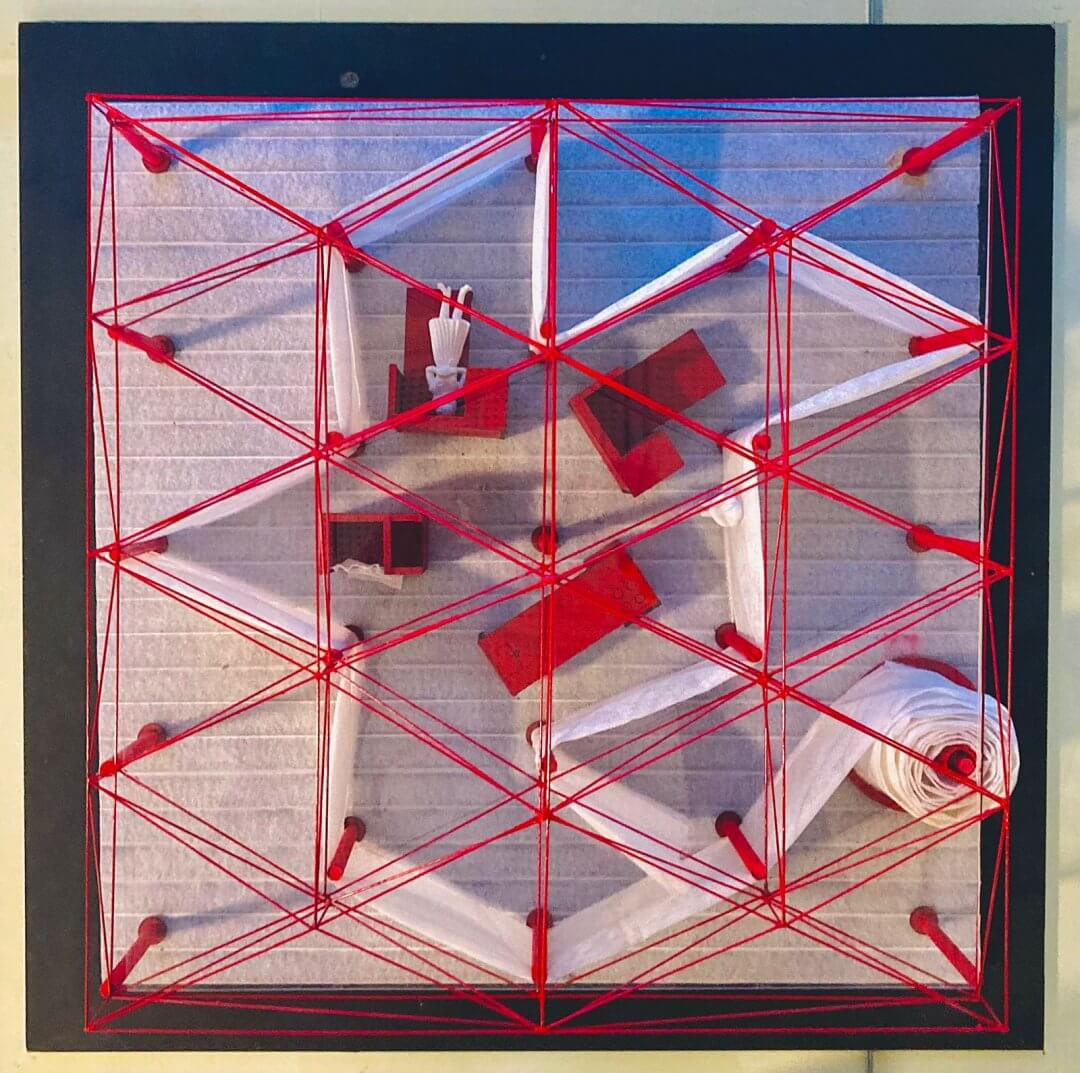Nicolás Rodríguez
Single-family house based on a grid whose shape and size depend on the movement of a continuous envelope around pillars.
We usually understand the concept of housing as that place, space or set of enclosures intended for living, for hosting the day-to-day life of a person or a group of them. The house, therefore, must be adapted to the number of users, their needs, their ages, what they usually do, and even their routine and their daily and comfortable way of moving and carrying out their activities. Although today many understand that the house is for the person and not the person for the house, one of the main problems is the constant change and growth of people over time; This can be, for example, the birth of a new child, a job change for someone in the family, or simply internal changes that affect our way of living or feeling comfortable. Therefore, the staticity and solidity of the houses that we know are incapable of adapting to these external “forces”, and we see, consequently, how people search and investigate to find the house that best suits them at that moment of life. their lives.
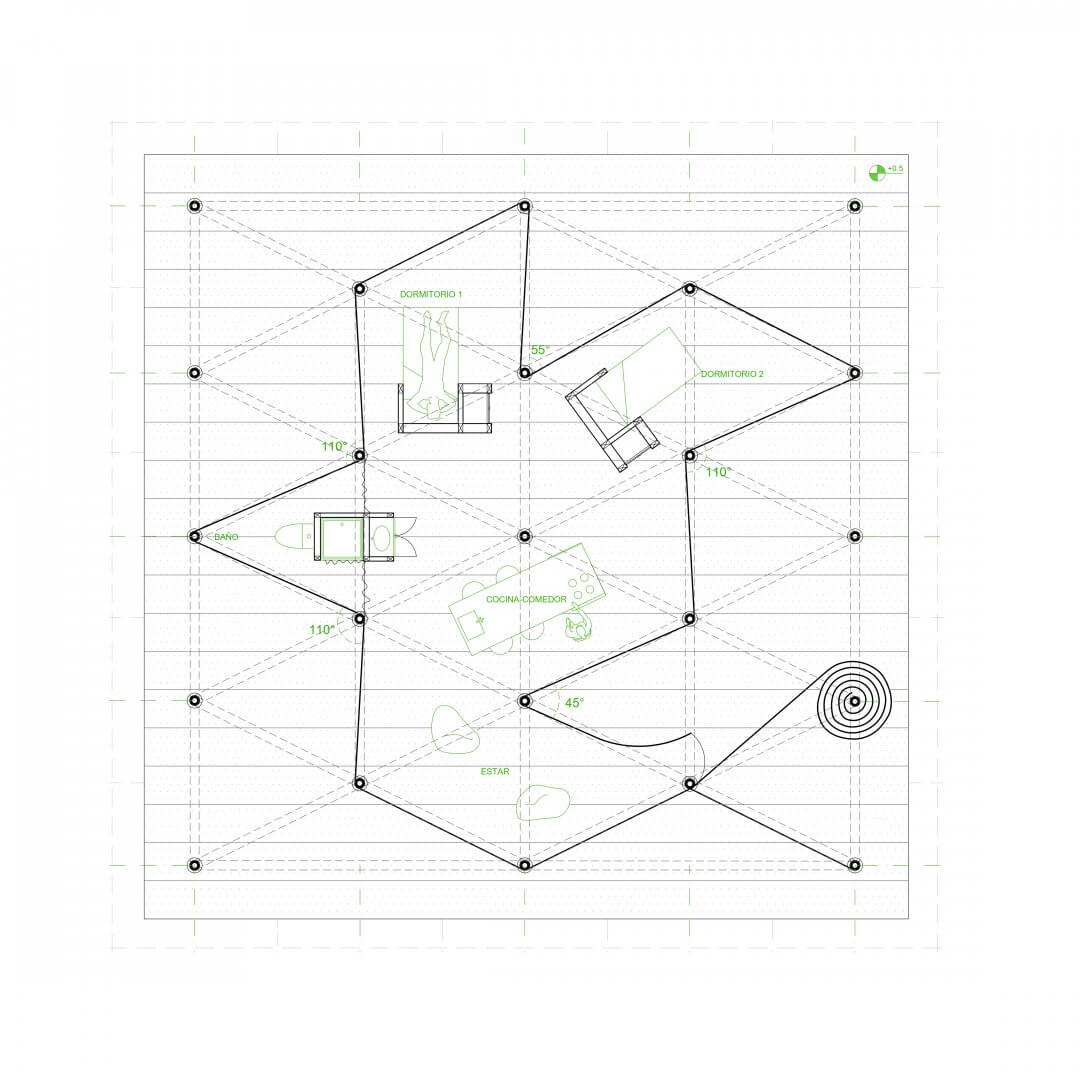
Le Corbusier wrote in “Précicions” that the messy table where two people had coffee is perfect, all the elements served and were used, and everything ends in the place where it ended because of the person, their movements and dimensions; nothing is in a false place. We must then understand the house as that informal and relaxed table in a bar and not as one in a formal restaurant where everything has a forced and false place. The architect, then, has the task of making a fixed and permanent place the faithful reflection of the user’s life, the table that seems messy but is the clear response of the diner, their movements and the conversations and moods during the conversation that They led him to put everything in the right place, unlike the “architect’s house” where everything seems to be in the perfect and right place but it can be a mere design whim.
These problems around housing occur precisely because building a house implies a fixed, solid and durable structure over time, and therefore it is a tremendous responsibility to design a house since it can mean making life more difficult or uncomfortable for a person. family for ever. Said problem is intended to be solved through this exercise that implies a mobile envelope, and that therefore, its configuration and position is in the person according to a certain moment, something that the Japanese architect Masayuki Kurokawa had already raised in a certain way with the Flexible House, made up of two solid modules and a flexible intermediate element that allows the space to be enlarged or reduced depending on the moment.
The Expandable House understands the house as something alive, as something that responds to the concerns and needs of its occupants and, therefore, changes as they do (Monteys, Fuertes, 2001, “Casa Collage”, p. 22). The exercise understands the changing states and needs of people and for this it also needs a changing and configuring element that makes a simile for it. By means of a continuous flexible envelope that moves around an ordered and fixed structure, it is revealed that it is space that adapts to man, or rather, man adapts it in his own way, it is not man who adapts himself to the space.
Author: Nicolás Rodríguez.
Location: Santiago, Chile.
University: Universidad del Desarrollo.
Year: 2022
